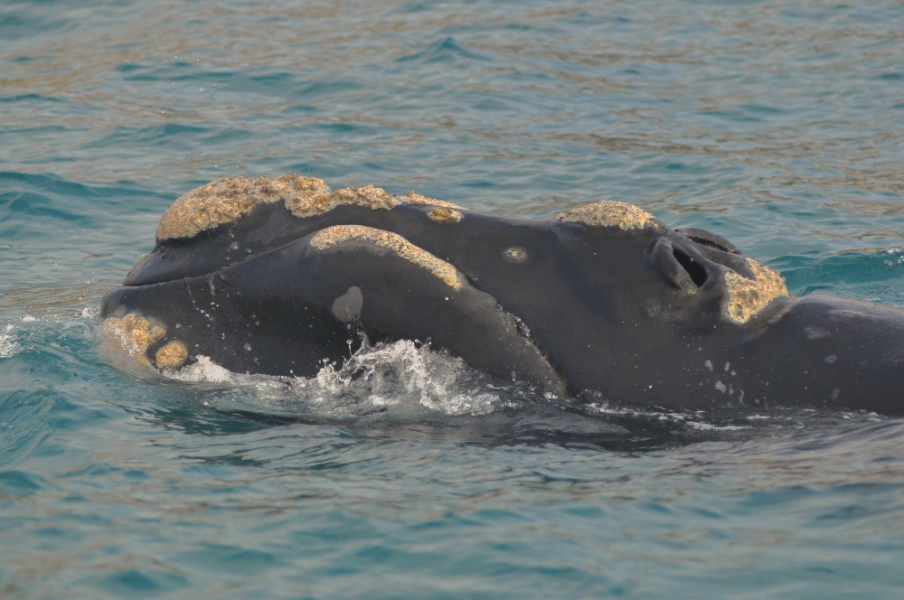Scientists on a rugged mid-winter trip to the remote sub-Antarctic islands have confirmed a large contingent of endangered southern right whales are spending the colder months near Campbell Island.
Watch footage of southern right whales that was captured on the expedition
Previous work on this species had focused on the animals at Auckland Island, with some minimal work done at the more remote Campbell Island almost 20 years ago.
The southern right whale was once abundant around New Zealand, but was hunted to near-extinction in the mid-1800s. With few sightings around the mainland for decades, the southern right whale was feared extinct in New Zealand. But, the population is slowly recovering due to remnant populations that gather each winter at the Auckland and Campbell islands.
Aims of the expedition
The aims of the month-long expedition, funded by NIWA and the Department of Conservation (DOC) were to find out whether the southern right whales still spent winter at Campbell Island, how many there were, where they came from and what they ate.
A group of scientists from NIWA, the universities of Otago and Auckland, Oregon State University in the USA and the University of St Andrews in Scotland left Bluff in July aboard the research sailing vessel Tiama, intent on finding some answers.
NIWA marine ecologist Dr David Thompson, who organised the expedition, said previous reports of southern right whales at Campbell Island were old and limited, making this research effort “a bit of a gamble”.
“We really did not know where we would find them, or how many there might be. Perhaps none,” he said.
Lead field biologist Dr Carlos Olavarria said: “This was one of the most adventurous surveys I have been on. It was a unique opportunity. We sailed through the ‘Furious Fifties’ of the Southern Ocean in all its fury, without knowing if or how many whales we would find at Campbell.”
Exhilarating results
But the gamble paid off with word reaching scientists back in New Zealand that between 50 and 60 southern right whales had been observed at Campbell Island over two days.
Lead investigator Dr Leigh Torres, said the news was “exciting, exhilarating and a relief to hear”.
“Despite cold and windy conditions, the team managed to collect some very important data about the occurrence of southern right whales at Campbell, and information that will tell us a lot about the population’s abundance, distribution and feeding patterns.”
Future for the southern right whale
The southern right whale is endangered, making it a big conservation concern for DOC. Laura Boren, part of DOC’s Marine Species and Threats Team, said: “It would be great to see more and more southern right whales around mainland New Zealand, the way it used to be. One of the best ways to ensure this can happen is by protecting the sub-Antarctic populations, and to better understand the links between these populations.”
Dr Will Rayment a collaborator on the project from the University of Otago who has conducted southern right whale research in New Zealand for many years, said the southern right whales were starting to re-establish their mainland wintering grounds in New Zealand.
“Investigating the connectivity between all the New Zealand habitats is essential to better understand the population size and recovery rate. These new data from Campbell Island are the missing piece of the puzzle.”
Futher research
With the success of this expedition to Campbell Island, more questions about this population of whales have arisen and the team is eager to get back next year for another field effort.
Dr Olavarria is already thinking of next year’s trip: “This survey was successful because we collected valuable unique data, and I am excited to go back next year to continue our research efforts to conserve this whale species.”



